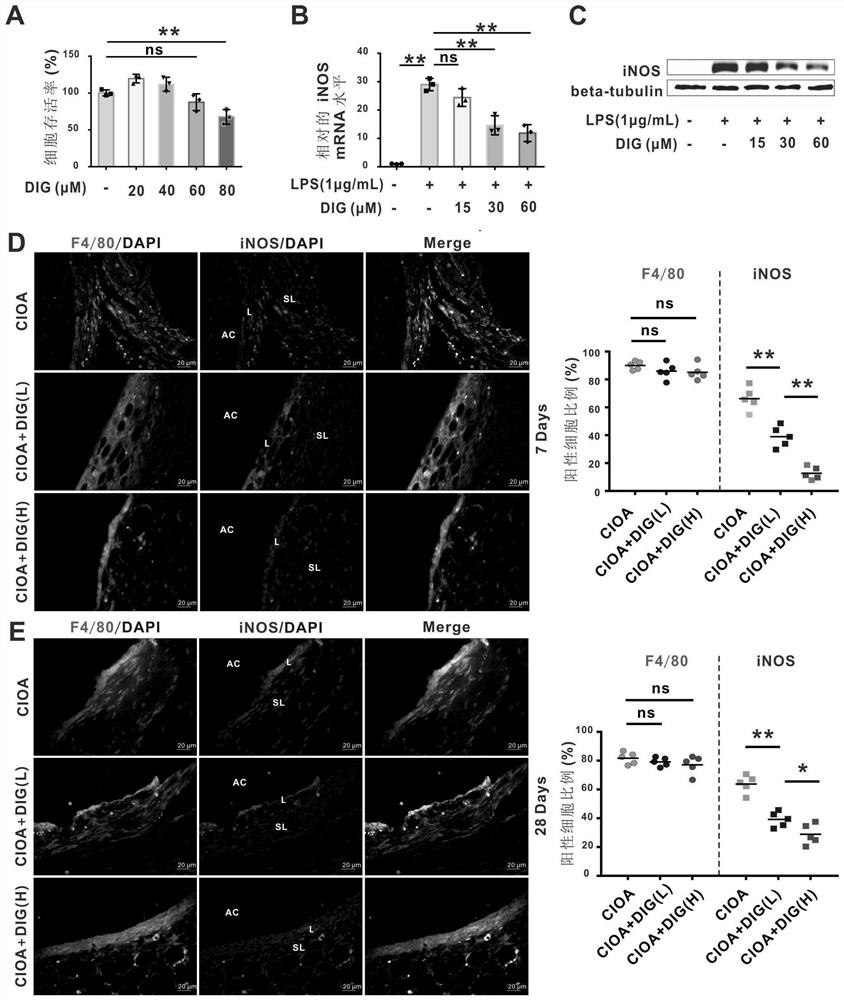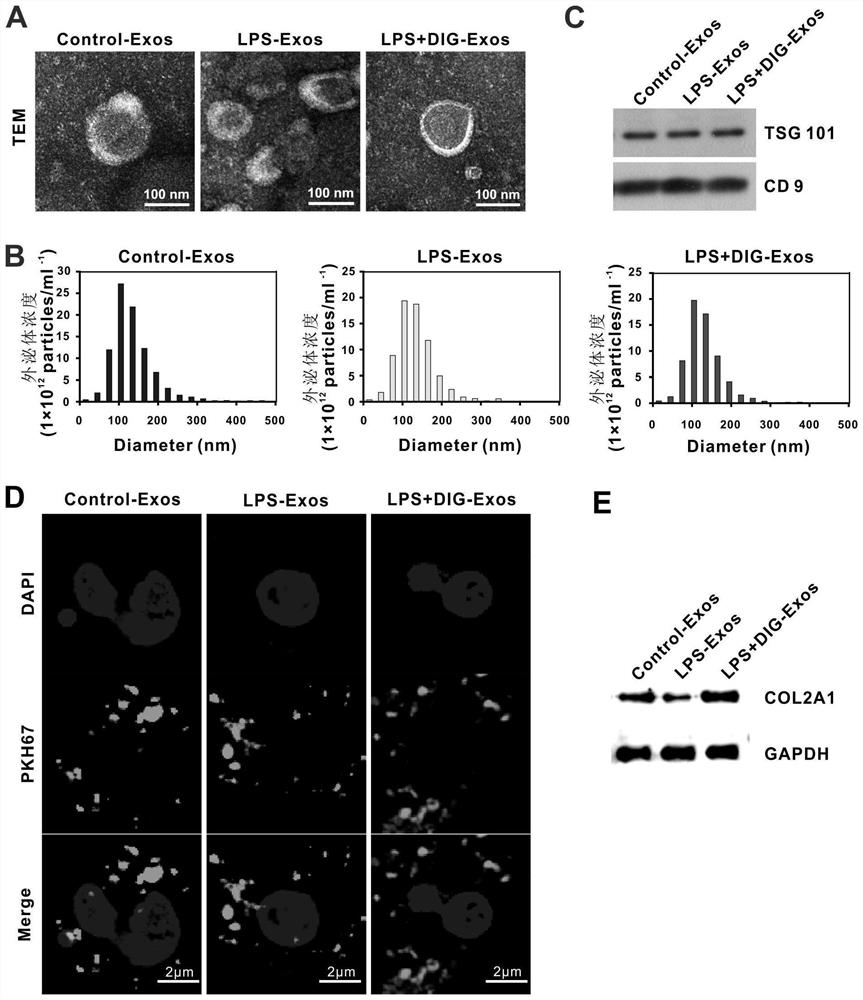Application of digoxin in preparation of medicine for treating and/or preventing macrophage M1 type polarization related diseases
A technology of macrophages and digoxin, which is applied in the field of medicine, can solve the problems of no research reports on the treatment of OA with DIG, and achieve the effect of delaying cartilage damage and synovitis
- Summary
- Abstract
- Description
- Claims
- Application Information
AI Technical Summary
Problems solved by technology
Method used
Image
Examples
Embodiment 1
[0024] Example 1: DIG inhibits the M1 polarization of synovial macrophages and delays articular cartilage damage
[0025] 1. MTT assay was used to detect the effect of DIG on the activity of mouse macrophage RAW 264.7, and the concentration used to inhibit cell inflammation was screened.
[0026] The specific operation is: spread 96-well plates with 3× concentration of macrophages, add different concentrations of DIG drugs (20 μM, 40 μM, 60 μM, 80 μM) respectively, add 10 μl of MTT solution to each well after 24 hours of treatment, and incubate at 37°C for 2- After 4 hours, 200 [mu]l DMSO was added to each well. Shake at low speed on a shaker at room temperature for 10 minutes to fully dissolve the crystals, and measure the absorbance of each well at OD 490nm in an enzyme-linked immunosorbent assay instrument.
[0027] Survival cells % = (OD experiment / OD control) x 100%
[0028] MTT assay was used to detect the effect of DIG on the activity of mouse macrophage RAW 264.7, an...
Embodiment 2
[0038] Example 2: Isolation, purification and functional identification of exosomes produced by M1 macrophages before and after DIG treatment
[0039]1. Cultivate RAW 264.7 cells, respectively set up blank group, LPS treatment group (1 μg / ml), LPS (1 μg / ml) + DIG (60 μM) treatment group, and ultracentrifugation to separate the exosomes (Exos) in the supernatant of cultured cells ). The exosome particle size was detected by NTA, the shape was detected by transmission electron microscopy, and the exosome Marker (CD9, TSG 101) was detected by Western blot.
[0040] The shape of exosomes produced by M1 macrophages before and after DIG treatment was detected by transmission electron microscopy ( image 3 A), the particle size of exosomes detected by NTA ( image 3 B), Western blot detection of exosome Marker ( image 3 C).
[0041] 2. Isolate primary mouse chondrocytes, stain and mark exosomes derived from macrophages with PKH67, and co-incubate with primary chondrocytes to obs...
PUM
 Login to view more
Login to view more Abstract
Description
Claims
Application Information
 Login to view more
Login to view more - R&D Engineer
- R&D Manager
- IP Professional
- Industry Leading Data Capabilities
- Powerful AI technology
- Patent DNA Extraction
Browse by: Latest US Patents, China's latest patents, Technical Efficacy Thesaurus, Application Domain, Technology Topic.
© 2024 PatSnap. All rights reserved.Legal|Privacy policy|Modern Slavery Act Transparency Statement|Sitemap



